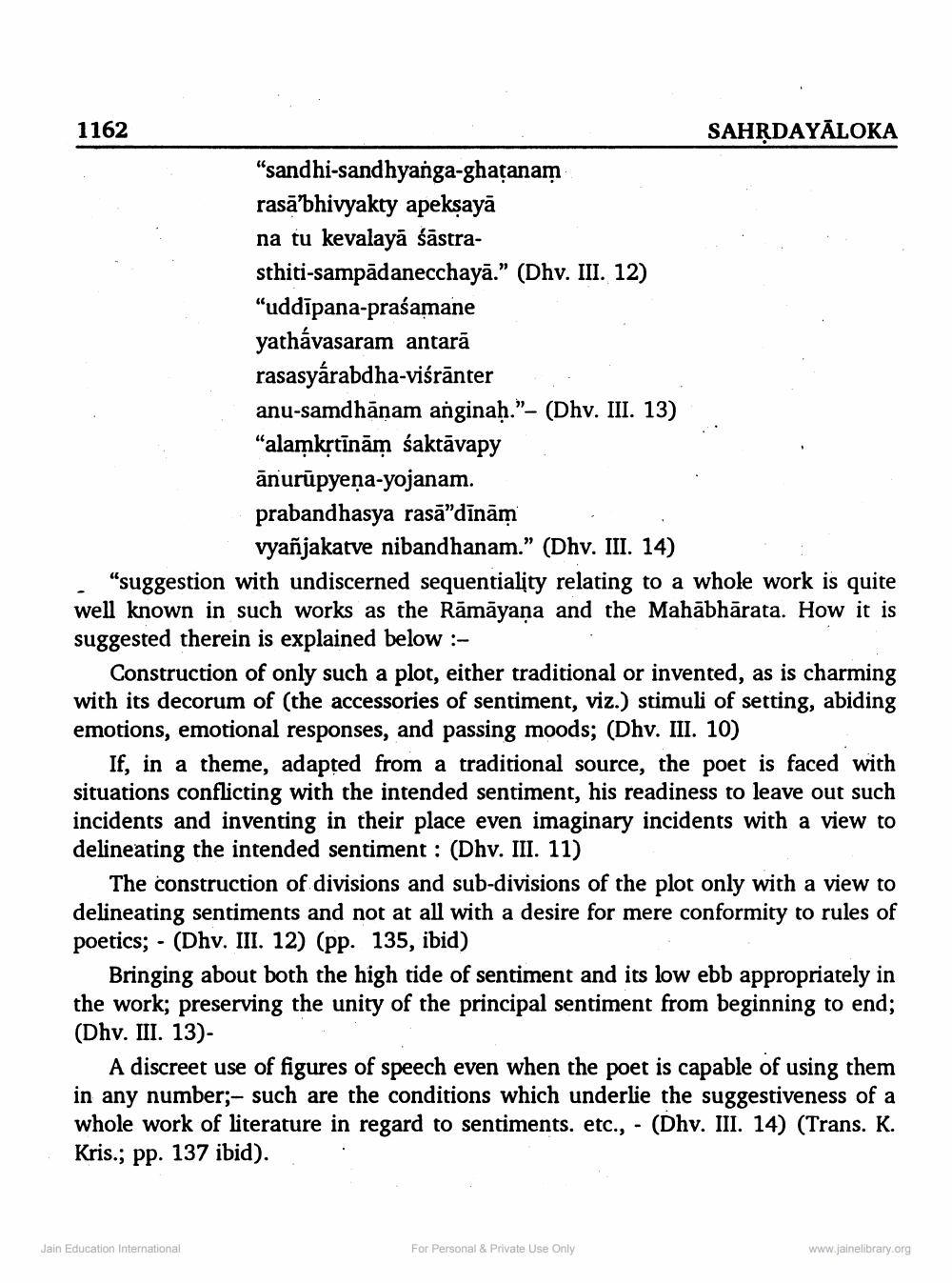________________
1162
"sandhi-sandhyanga-ghatanam
rasa'bhivyakty apekṣayā na tu kevalayā śāstra
sthiti-sampādanecchayā." (Dhv. III. 12)
"uddipana-praśamane yathávasaram antarā rasasyárabdha-viśranter
anu-samdhānam anginah."- (Dhv. III. 13)
"alamkṛtīnām saktāvapy
ānurūpyeṇa-yojanam.
prabandhasya rasă"dīnām
vyañjakatve nibandhanam." (Dhv. III. 14)
"suggestion with undiscerned sequentiality relating to a whole work is quite well known in such works as the Rāmāyaṇa and the Mahabharata. How it is suggested therein is explained below :
SAHṚDAYALOKA
Construction of only such a plot, either traditional or invented, as is charming with its decorum of (the accessories of sentiment, viz.) stimuli of setting, abiding emotions, emotional responses, and passing moods; (Dhv. III. 10)
If, in a theme, adapted from a traditional source, the poet is faced with situations conflicting with the intended sentiment, his readiness to leave out such incidents and inventing in their place even imaginary incidents with a view to delineating the intended sentiment: (Dhv. III. 11)
The construction of divisions and sub-divisions of the plot only with a view to delineating sentiments and not at all with a desire for mere conformity to rules of poetics; (Dhv. III. 12) (pp. 135, ibid)
Jain Education International
Bringing about both the high tide of sentiment and its low ebb appropriately in the work; preserving the unity of the principal sentiment from beginning to end; (Dhv. III. 13)
A discreet use of figures of speech even when the poet is capable of using them in any number;- such are the conditions which underlie the suggestiveness of a whole work of literature in regard to sentiments. etc., - (Dhv. III. 14) (Trans. K. Kris.; pp. 137 ibid).
For Personal & Private Use Only
www.jainelibrary.org




